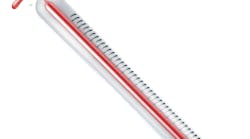Following your repair procedure, you found the motor runs far too hot. Previously, we identified external factors (e.g., contaminants) and conditions (e.g., misalignment) that may be causing the overheating. But no motor overheating diagnosis is complete without looking at the supply power.
The power analyzer is the best tool for the job. Using this, you need to look at such things as:
• Low or high voltage. Not just momentarily, but over time. Use a power analyzer that you can hook up to collect voltage data over a significant period of operation. You may find, for example, a voltage trough that occurs when an air compressor enters the loading phase.
• Voltage imbalance. A power analyzer helps you spot not just chronic (or constant) voltage imbalance, but episodic imbalances.
• Harmonics. Many power analyzers provide detailed harmonics information in addition to other diagnostics.
• Waveform issues. Waveform distortion means less of the delivered power is turning the motor; the wasted power is released as heat.
• Power factor. The lower this is, the more current the motor needs to drive the load.



